A Kinect tracking application for Media Artists and Designers. Master Thesis, M.F.A., Media Art and Design, July 2012.
Theatre is one of the oldest entertainment formats of humankind and costumes are the basis for the characters played. We integrate contemprary technologies into theatre costumes for making a performance more innovative.

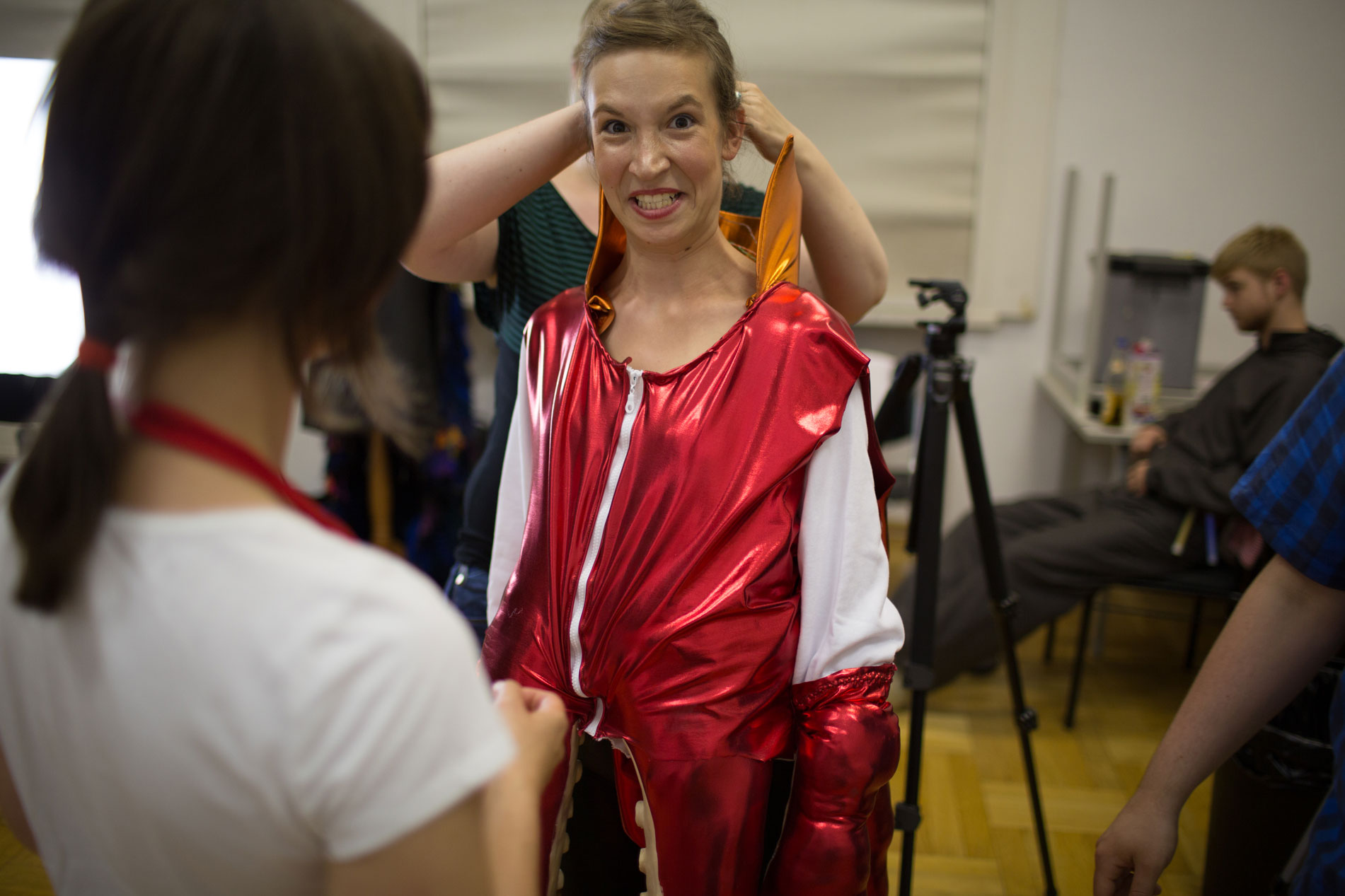
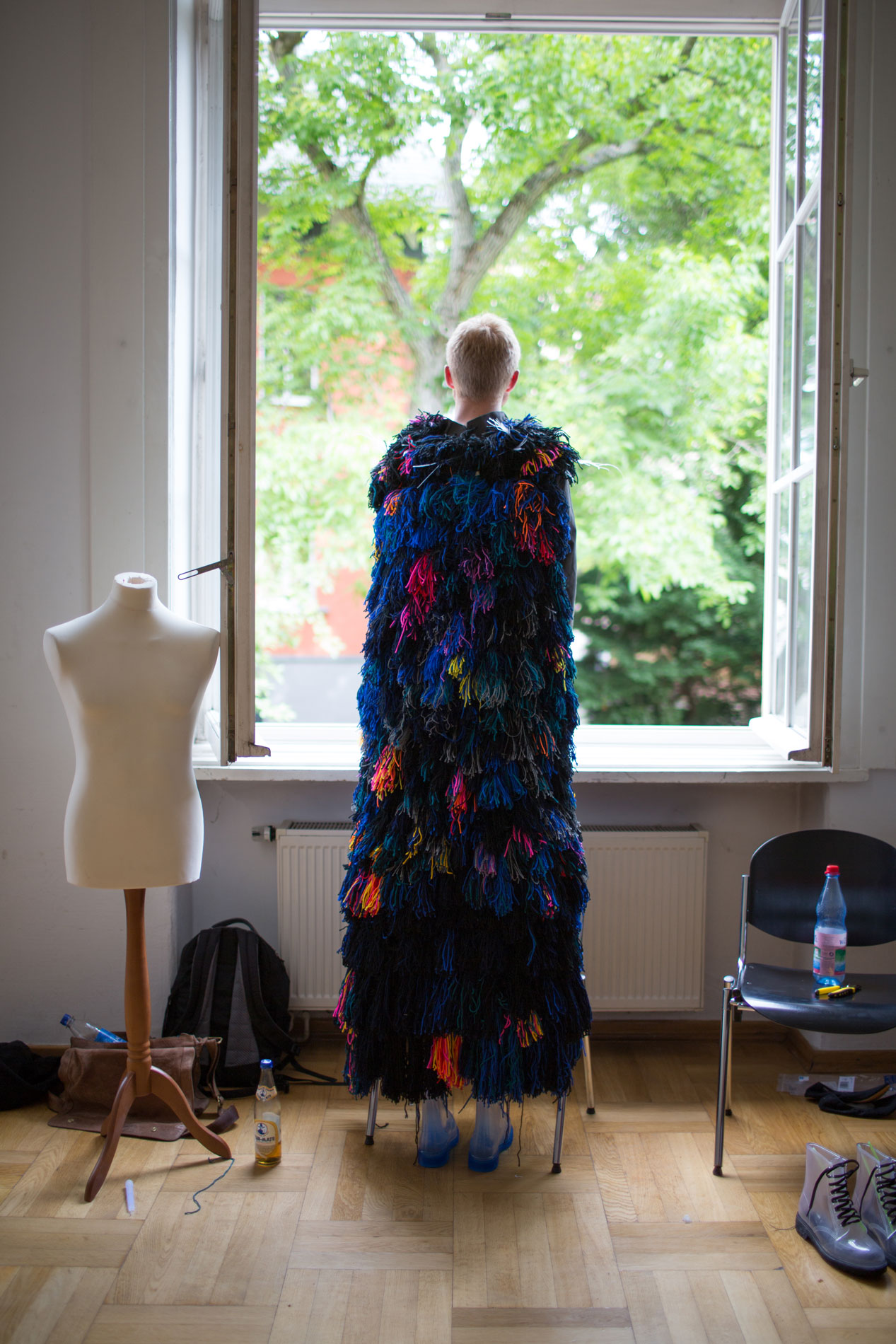
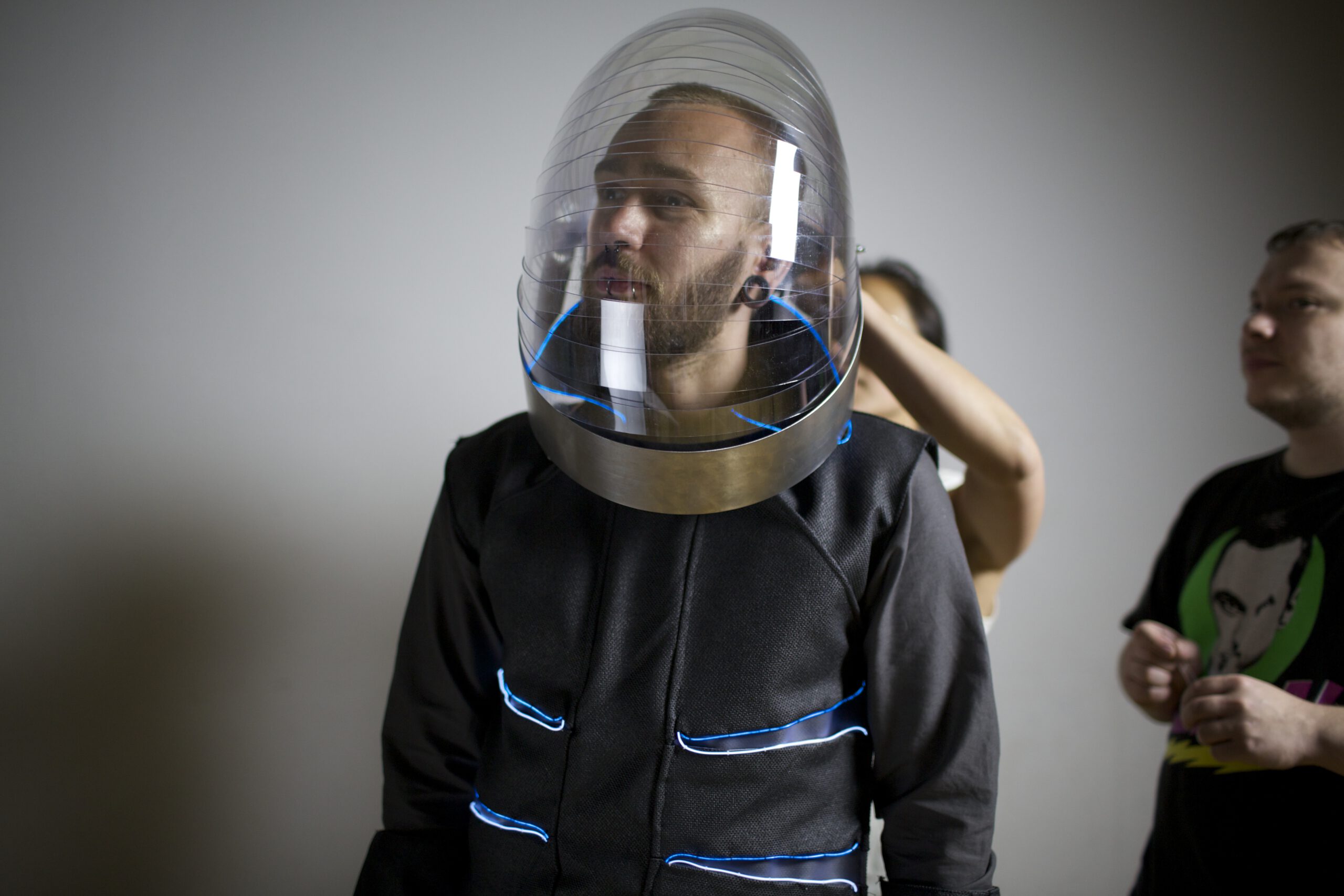
In summer term 2014, I initiated a student project that explored how interactive costumes for theatre stages could look and function like. Nine students of Computer Science & Media, Product Design, and Media Art & Design worked collaborative during the classes. The goal was to conceptualize, develop, and test theatre costumes with integrated features that enable actors to explore a new interactive performativity through their stage clothing. After deciding to create costumes for ‘Twenty Thousand Leagues under the Sea’ by Jules Verne, the students worked together in interdisciplinary teams, and designed the costumes for Captain Nemo, the Diving Suit of the Nautilus Crew, and the Octopus Sea Creature. They explored several constructions techniques and Arduino-based technologies for embedding different sensors and actuators into the textiles in order to realize the intended interaction concepts.
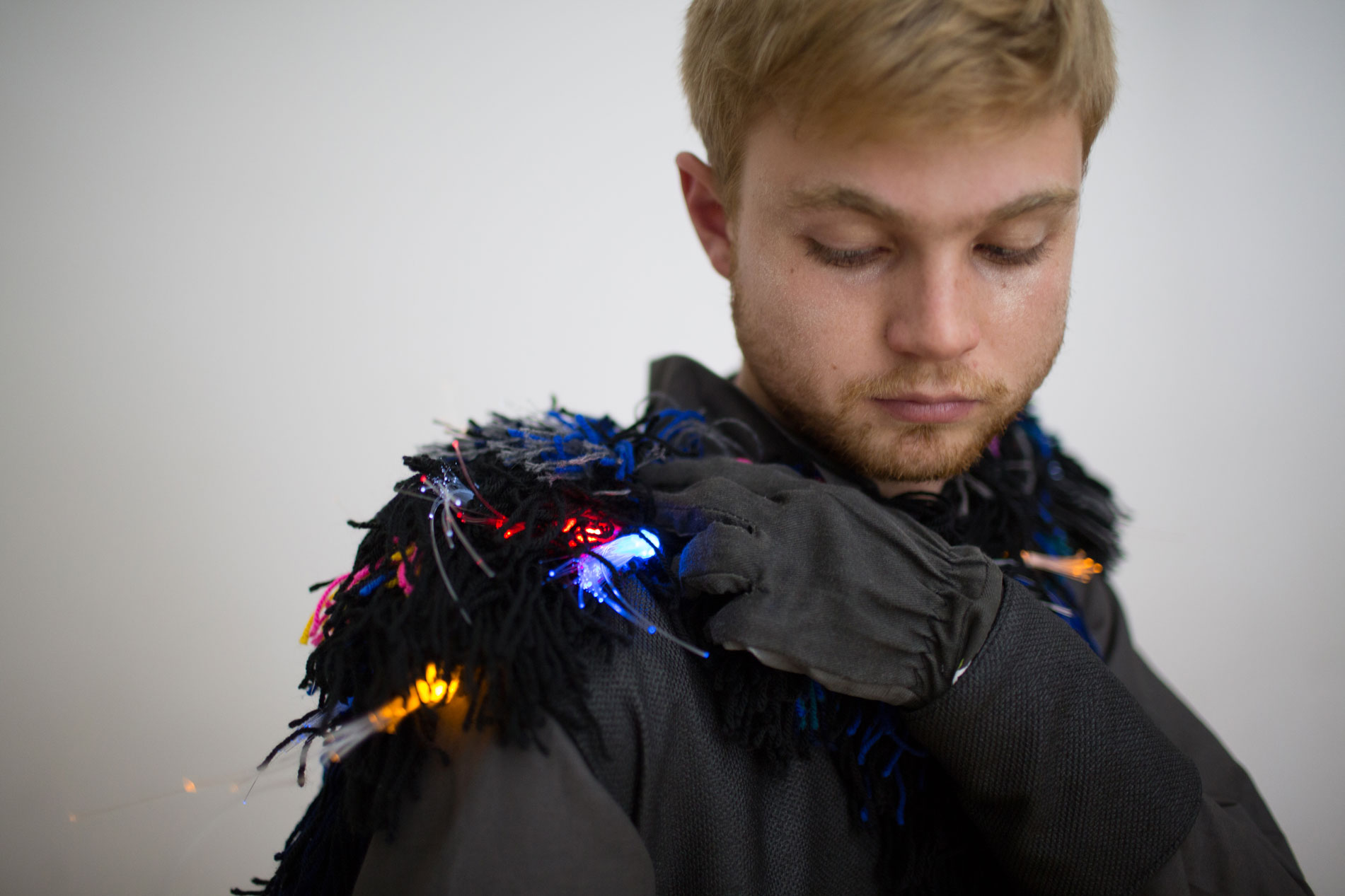
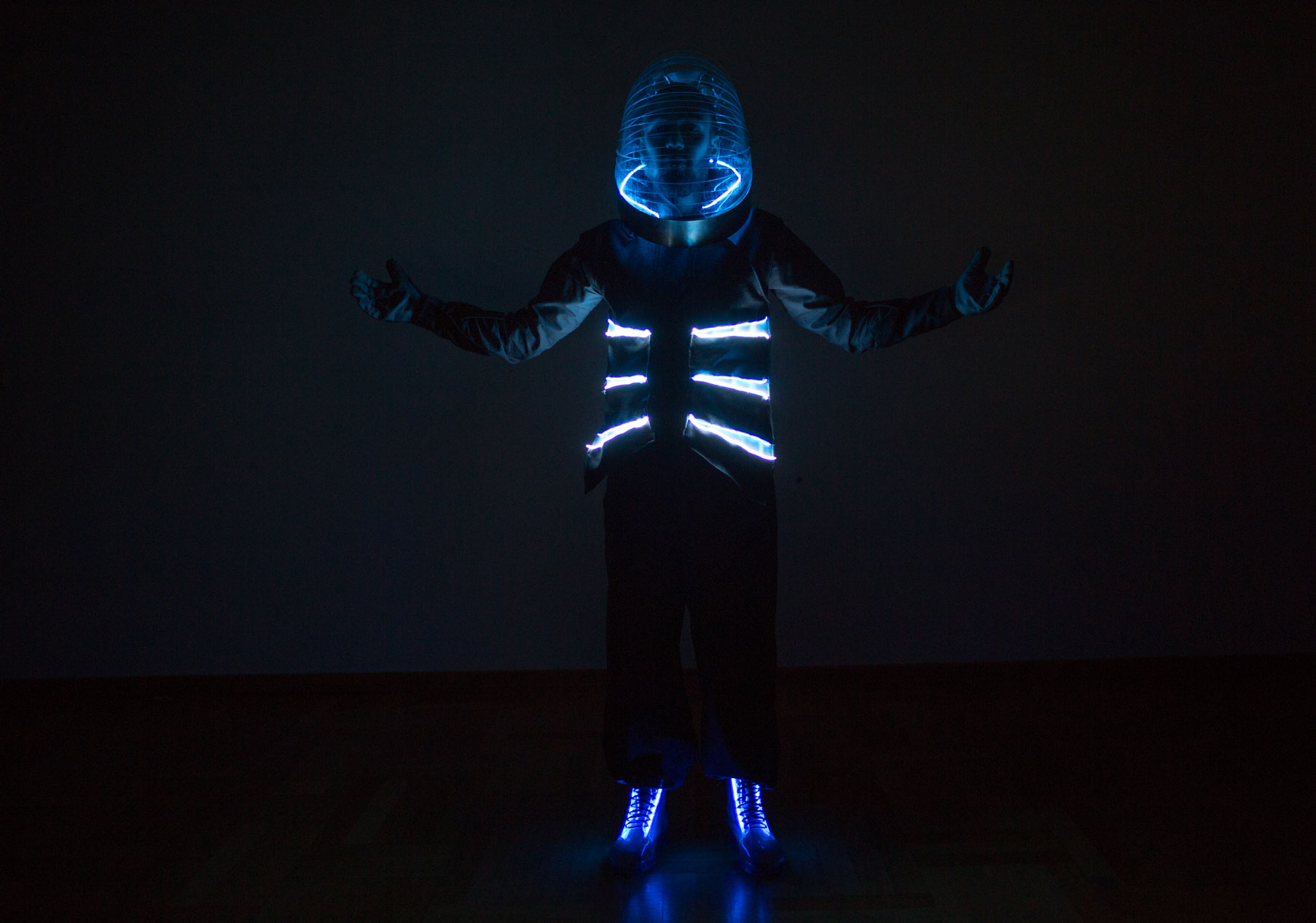

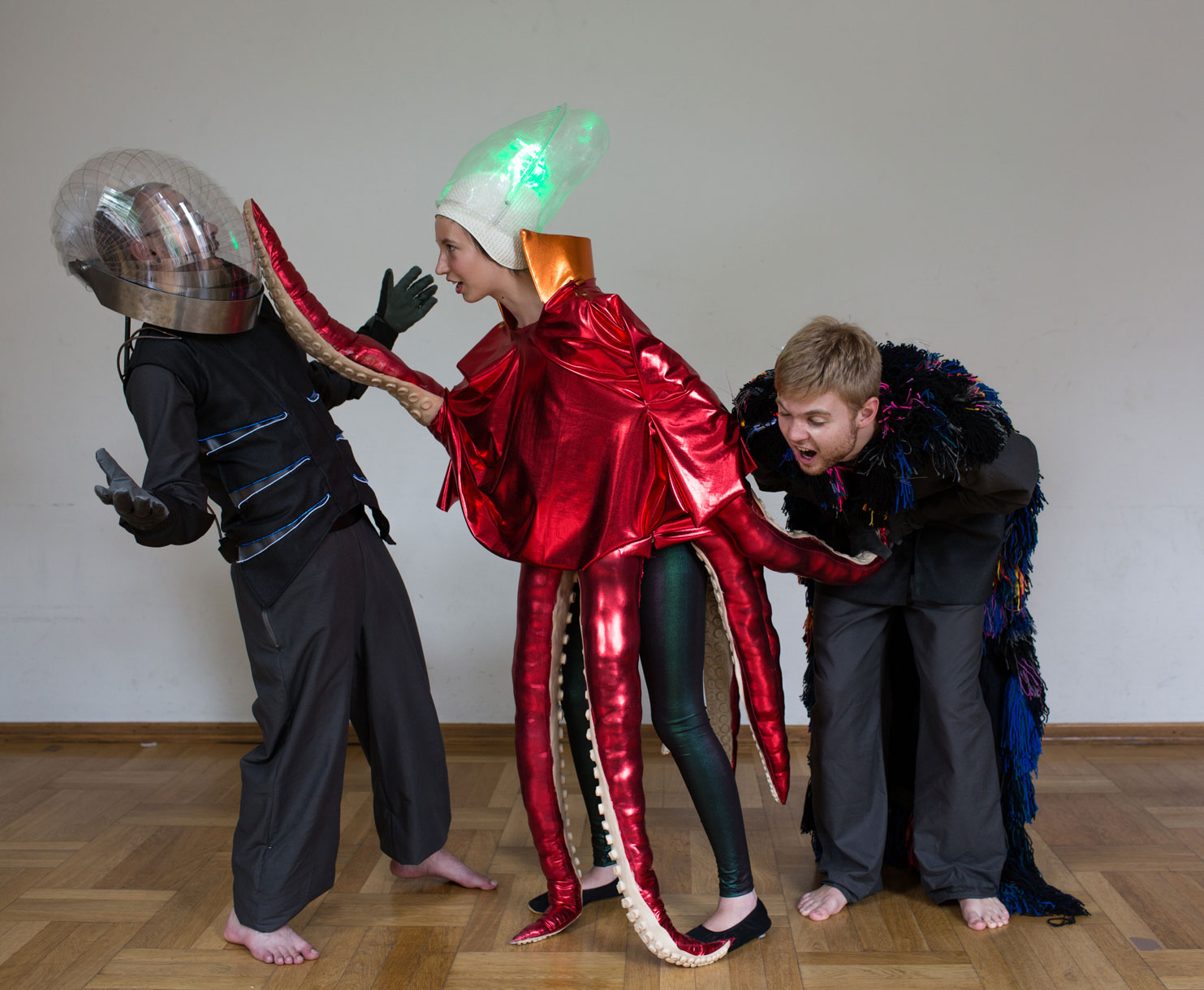
We started our course with a design acting workshop conducted by the drama educator/ theatre pedagogue practitioner Julia Hahn who introduced us to some acting techniques (e.g. role-play and improvising). Through this practical session we got a better understanding what acting actually is and could make our own role-playing experiences. In addition, we visited a professional performance at a local theatre house and observed how the costumes appear and change during the show. During a later class, we made a bodystorming – this is the opposite of brainstorming. Instead of just sitting around a table, thinking and collecting ideas, we tried out with different everyday materials how the costumes for the three characters could look and feel like. This helped us to get detailed ideas on how to design the garments and how to best embed the technology components into them. It then took around eight to ten weeks to craft the costumes, and at the end of the term, we conducted a user study for evaluating our costumes. For this, we did a final staging workshop and collaborated again with Julia Hahn who helped us to prepare and stage a short performance. We invited three semi-professional actors who wore our costumes during this workshop. Observations of and interviews with the actors gave us more detailed insights into e.g. how they perceived the interactive costumes, if they felt comfortable while wearing them, and if the costumes were enhancing their expressiveness while acting.
Costume Concepts
Captain Nemo _ is the head of the Nautilus submarine. He wears a ‘living’ robe made of sea anemones. It glows in the dark underwater world activated through a light sensor, and it vibrates if enemies approach what we realized trough a distance sensor that controls a dozen vibrating motors under the long robe. The actor can is-/enable all features by pushing a button hidden in the costume. Creators: Hasibullah Sahibzada, Sebastian Gottschlich, and Wiebke Müller.
Diving Suit of the Nautilus Crew _ is worn by the submarine team. The jacket has a fin-like pattern glowing blue in water and white on land mode. These modes are activated by a button at the chest. Further, the diver wears an oxygen tank on his back with two chambers – one delivering air while the other chamber regenerates. The tank can be controlled via a display on the suit’s glove – LEDs show the active fill level and a button allows to switch the tank’s chambers. Creators: Henriette Abitz, Marco Schmandt, and Susann Luge.
Octopus Sea Creature _ is the antagonist of the story told. It is a barbarous animal living in the dark underwater world. It can move two tentacles in the front what is possible through integrated motorized skeletons. The octopus’ head glows according to its moods – green when relaxed, yellow when attentive and red if aggressive. Two dials each one hidden in one of the costume sleeves (where the ator puts his arms into) control the moving tentacles and mood functions. Creators: Goekcen Dilek Acay, Malik Al-hallak, and Theresa Rückert.

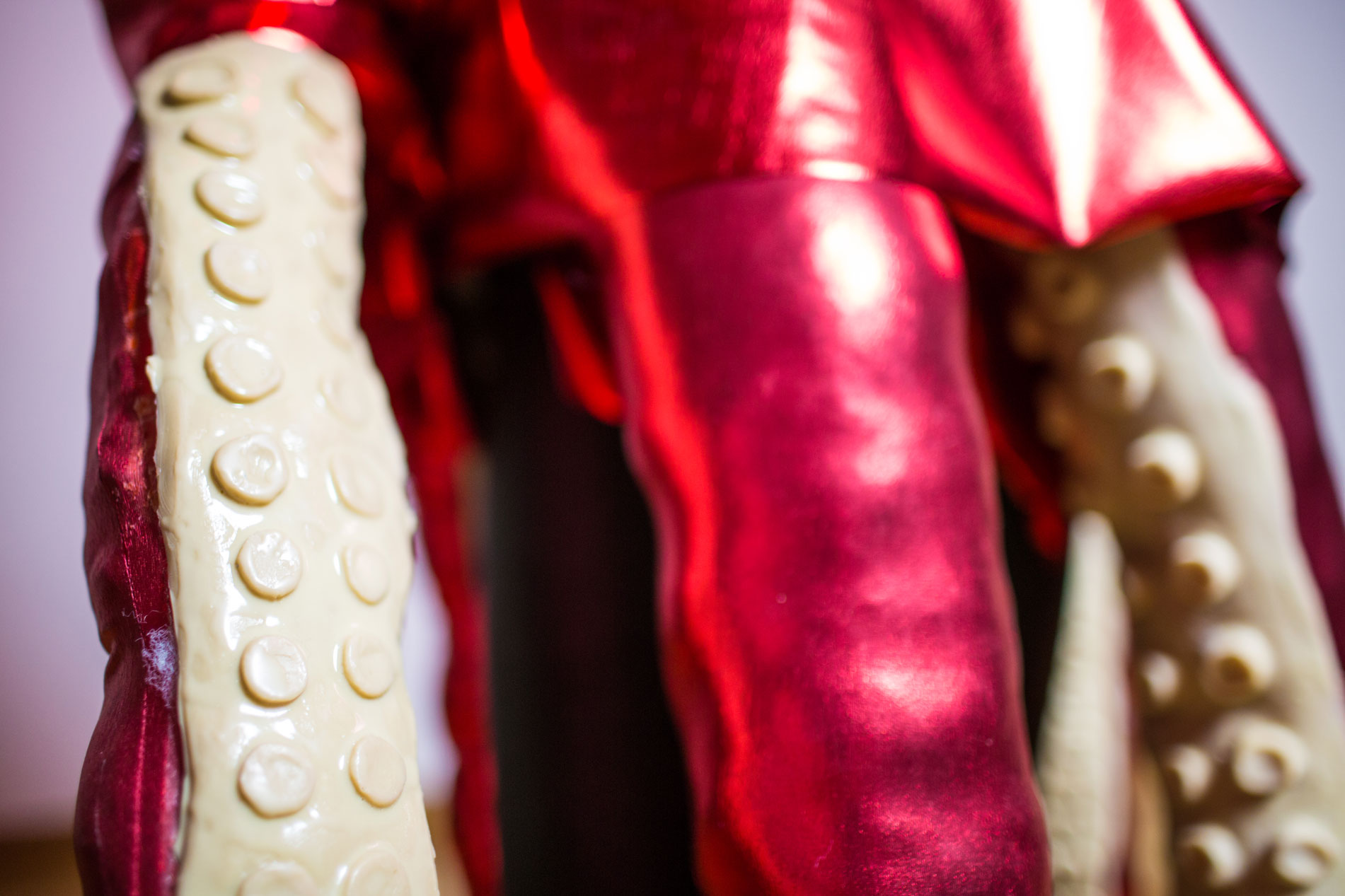
Project website _ uni-weimar.de/projekte/interactive-costumes
Participating students _ Wiebke Müller, Theresa Rückert, Susann Luge, Sebastian Gottschlich, Marco Schmandt, Malik Al-hallak, Henriette Abitz, Hasibullah Sahibzada, and Goekcen Dilek Acay
Supervision _ Eva Hornecker and Michaela Honauer
Design acting and staging workshop _ Julia Hahn
Actors _ Cora Kneisz, Markus Oehlke, and Rafael Ecker
Publications
- Michaela Honauer and Eva Hornecker. 2015. Challenges for Creating and Staging Interactive Costumes for the Theatre Stage. In Proceedings of the 2015 ACM SIGCHI Conference on Creativity and Cognition (C&C ’15). ACM, New York, NY, USA, 13-22. http://dx.doi.org/10.1145/2757226.2757242.
- Michaela Honauer and Eva Hornecker. 2014. Exploring Interactive Costumes. In Andreas Butz, Michael Koch, and Johann Schlichter (Eds.), Mensch & Computer 2014 – Workshopband. 6 pages. PDF.